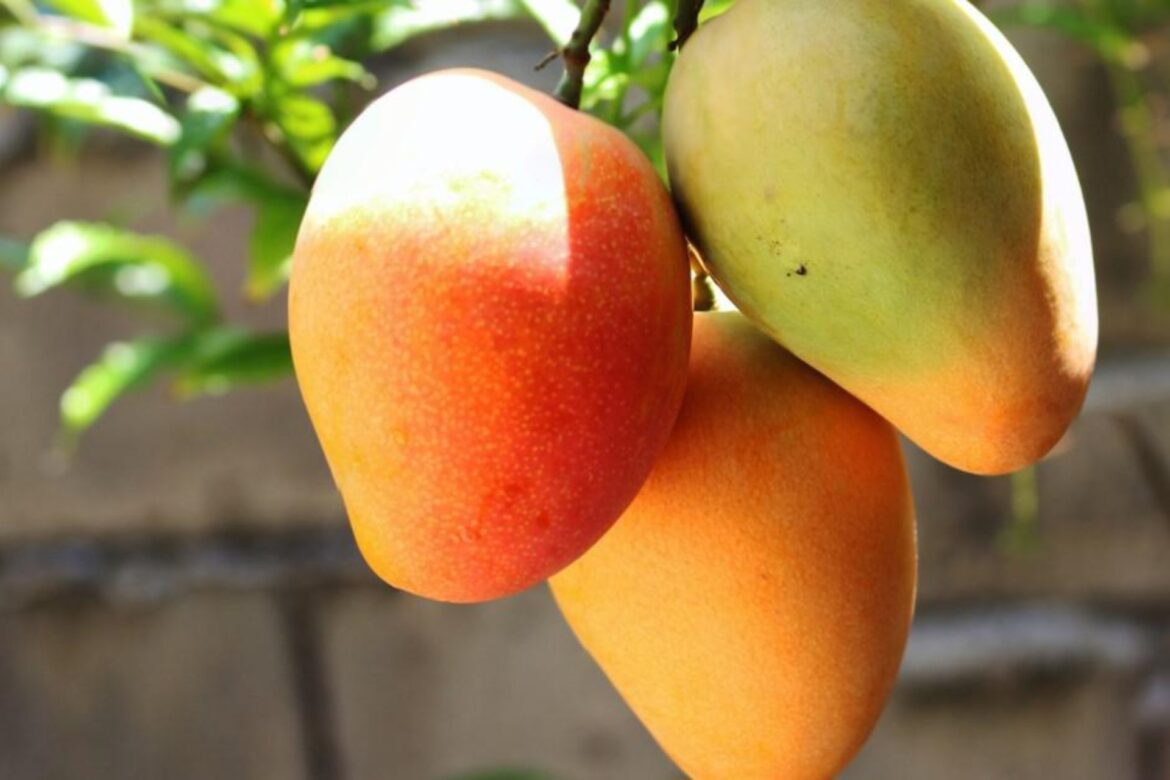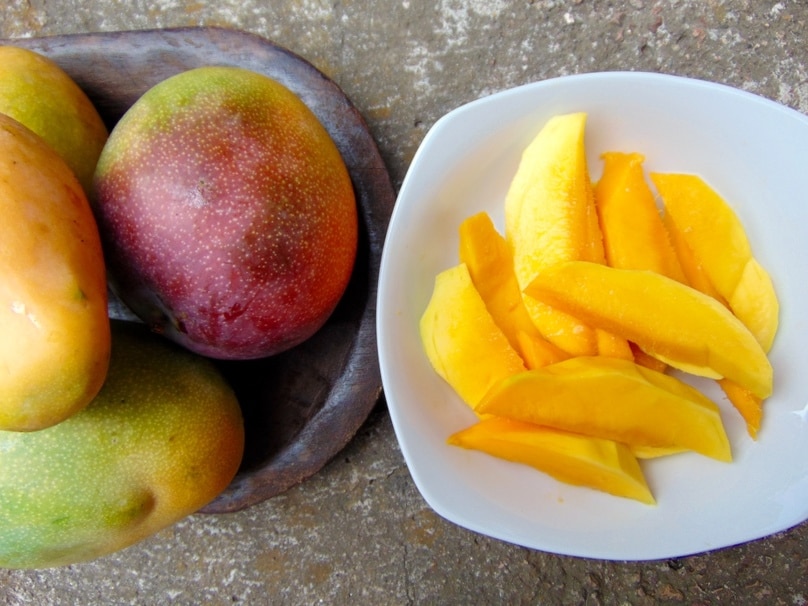Table of Contents
Mangoes are the ultimate tropical treat—sweet, juicy, and bursting with flavor. But let’s be real, nothing’s more disappointing than biting into a mango and finding it hard, sour, or just… not ripe. We’ve all been there, right? The good news is that with a few simple tips, you can become a mango-picking pro and never end up with a dud again. Whether you’re whipping up a refreshing mango smoothie, tossing it into a salad, or just savoring it on its own, knowing how to tell if a mango is ripe will change your fruit game for good.
Here, I’m going to walk you through everything you need to know about picking the perfect mango—how to choose the best one, how to tell if it’s ripe, and even some mouthwatering recipes you can try with that perfectly ripe mango. Ready to become a mango expert? Let’s dive in!
How to Tell if a Mango is Ripe: Key Indicators to Look For
Credit: spoonuniversity.com
The first step to enjoying a delicious mango is knowing how to tell if it’s ripe. Mangoes can look tempting, but not all of them are ready to eat right away. Here’s a simple breakdown of the key factors you should consider when determining how to tell if mango is ripe.
Mango Color: What to Expect
Mango color can be a great indicator of ripeness, but it’s important to know that mangoes come in various colors depending on the variety. However, when learning how to tell if a mango is ripe, keep in mind the following general rules:
- Green Mango: A mango that’s mostly green may not be ripe yet. Some varieties, like the Keitt mango, can stay green even when ripe, but for most varieties, like the Haden or Tommy Atkins, a yellow or red tint is a sign that it’s ripening.
- Yellow or Red Mango: As mangoes ripen, they develop a deep yellow, orange, or red color. The richer and more vibrant the color, the more likely it is that the mango is ripe.
- Variety-Specific Color Change: For example, Ataulfo mangoes will turn a golden yellow when ripe. On the other hand, Kent mangoes might develop a slight red blush along with greenish-yellow skin. Each variety has its own ripe mango color, so it’s essential to understand what the mango should look like based on its type.
Remember, mango colors are a crucial part of learning how to tell if a mango is ripe, but it’s not the only indicator.
Texture and Feel: Gently Squeeze It
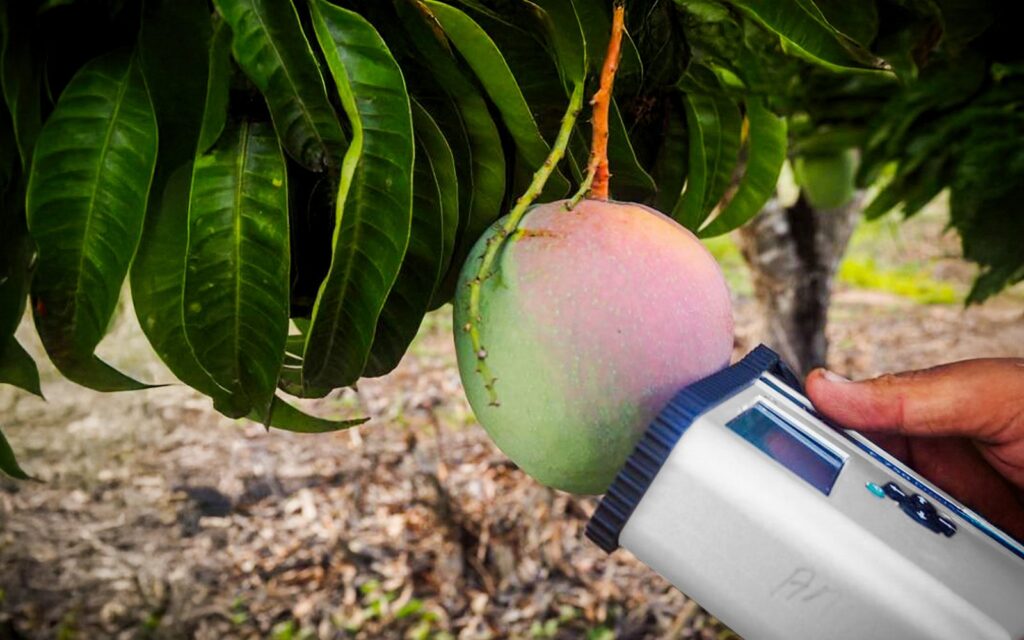
Credit: felixinstruments.com
color change, the next thing you should do is gently squeeze the fruit. If you’re wondering how can you tell if a mango is ripe by touch, here’s what to look for:
- Firm Mango: A mango that feels hard when you squeeze it is not yet ripe. You can let it sit at room temperature for a few days to allow it to ripen. Avoid buying mangoes that feel overly firm unless you’re planning to eat them later in the week.
- Slightly Soft Mango: A ripe mango will yield slightly to pressure but should not feel squishy. When you gently press the skin, it should give just a little, indicating that the flesh inside is tender and juicy.
- Overripe Mango: If the mango feels mushy or has a lot of give when you press it, it’s likely overripe. This can result in an overly sweet or even fermented taste, which isn’t ideal if you’re after that perfect sweet mango experience.
Mango Smell: The Sweet Aroma
One of the best ways to tell if a mango is ripe is by smelling it. A ripe mango will have a strong, sweet, and fruity aroma near the stem. When the fruit is underripe, it will have little to no smell. Here’s what to keep in mind:
- Sweet, Fruity Fragrance: A ripe mango will emit a rich, tropical scent. It’s usually strongest at the stem or where the fruit was picked from the tree.
- No Aroma: If you don’t smell much, the mango is likely not yet ripe.
- Fermented or Sour Smell: A fermented or overly sour scent can be an indicator that the mango is past its prime and overripe.
Mango Shape: Round and Plump
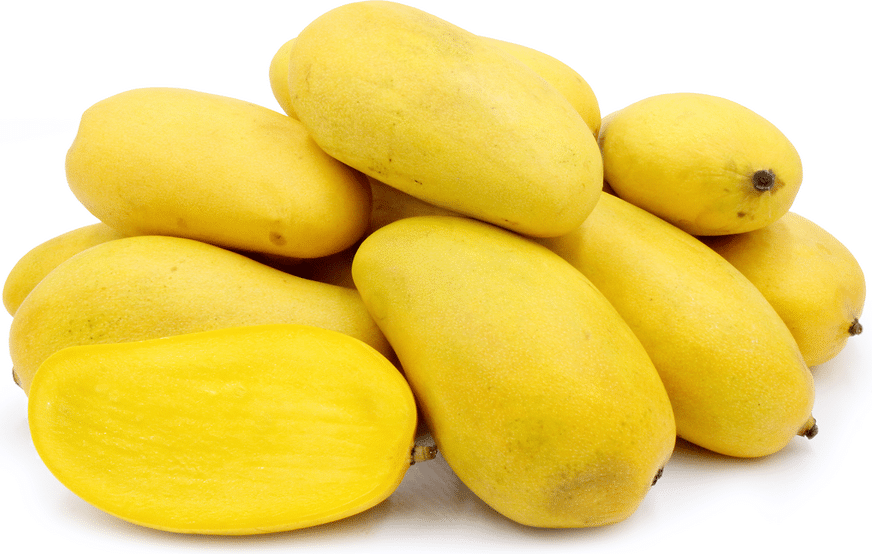
Credit: specialtyproduce.com
When learning how to tell if a mango is ripe, the shape is another important factor to keep in mind. A ripe mango should be plump and full of flesh. Here’s what to look for:
- Full, Rounded Shape: The fruit should feel heavy for its size and slightly rounded. This indicates that the flesh is juicy and not dried out.
- Flat Mango: If the mango feels flat or uneven, it may not be ripe yet. Flat mangoes may not have developed their full sweetness, so avoid them if you want the best tasting mango.
Ripe Mango Appearance: What to Avoid
As you get better at identifying how to tell if mango is ripe, make sure you’re avoiding mangoes with certain signs of over-ripeness or damage. Here’s what to avoid when shopping for mangoes:
- Wrinkled Skin: Wrinkles can indicate that the mango has been overripe or stored for too long. While not all mangoes will have perfectly smooth skin, large wrinkles are a sign that it’s past its peak.
- Black or Brown Spots: These can indicate bruising, rot, or over-ripeness. While some small spots may be harmless, large black patches can affect the taste and texture of the mango.
- Dull or Discolored Skin: If the mango has a dull, lifeless appearance with no vibrancy, it might be underripe or overripe. Choose mangoes with bright, vivid skin.
How to Choose the Sweetest Mango
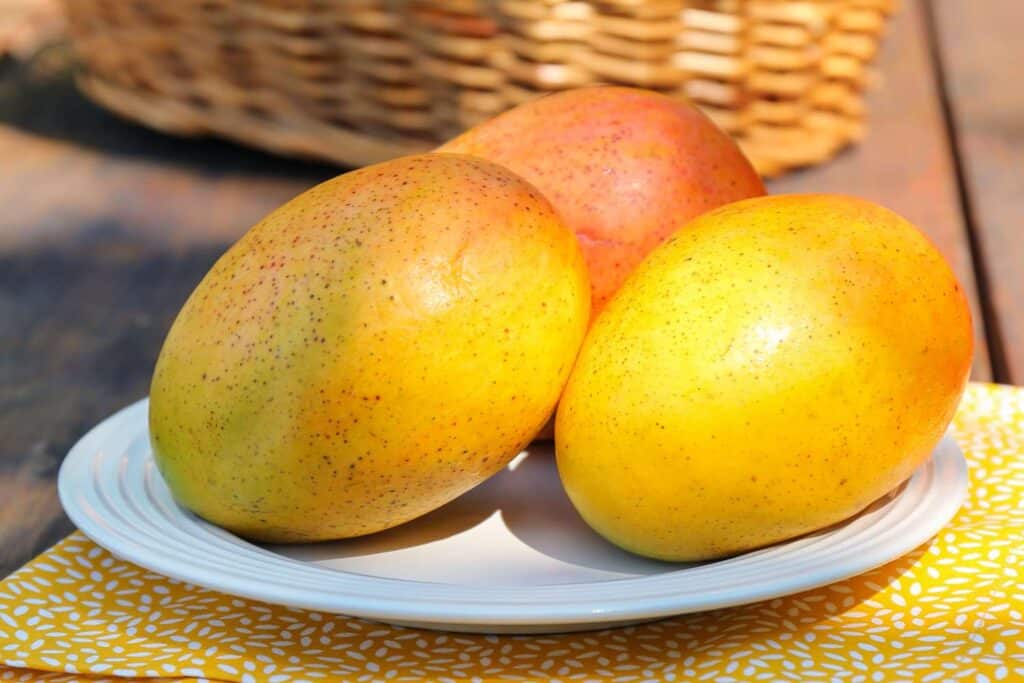
Credit: simplyrecipes.com
Now that you know how to tell if a mango is ripe, you might wonder, how can you choose the sweetest mango? The sweetest mangoes typically come from specific varieties known for their rich flavor profiles. Here are some of the sweetest mango varieties:
- Ataulfo Mango: Known for its buttery texture and honey-like sweetness, this variety is a favorite for many mango lovers.
- Kent Mango: Known for being super sweet and juicy, with minimal fiber, this variety is perfect for smoothies or snacking.
- Haden Mango: One of the most common varieties, Haden mangoes have a sweet, tangy flavor and are known for their bright colors.
If you’re looking for the best mango variety, try tasting a few different types to see which one fits your taste preferences. Each variety has its own unique flavor and texture.
Ripe Mango Recipes: How to Use Your Perfect Mango
Once you’ve learned how to tell if a mango is ripe, it’s time to use it in delicious ripe mango recipes. Mangoes are incredibly versatile and can be used in sweet and savory dishes. Here are a few recipe ideas:
- Mango Smoothie: Blend ripe mango with yogurt, coconut water, and a little honey for a refreshing tropical smoothie.
- Mango Salsa: Dice ripe mango and mix with onions, cilantro, lime juice, and a pinch of salt for a delicious salsa. Perfect for serving with grilled chicken or tacos.
- Mango Chutney: Cook diced mango with vinegar, sugar, and spices to create a tangy chutney. Serve it alongside meats or on sandwiches.
Ripe Mango Benefits: Why You Should Eat More Mangoes
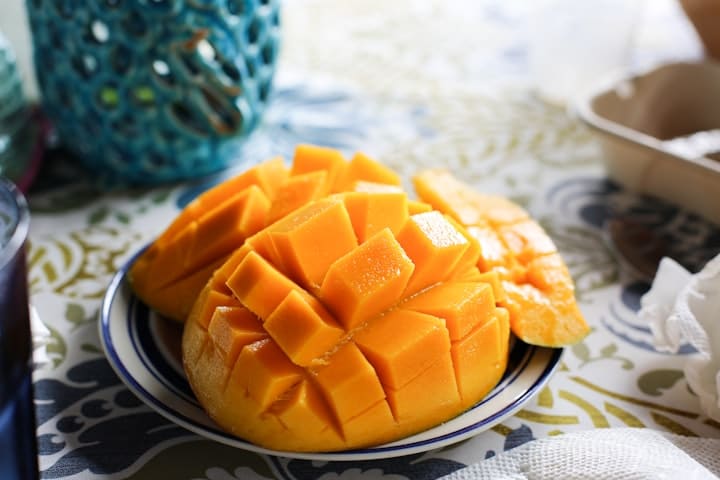
Credit: vocal.media
Not only are ripe mangoes delicious, but they also come packed with nutrients. Here are some of the key ripe mango benefits:
- High in Vitamin C: Mangoes are packed with vitamin C, which boosts immunity and supports skin health.
- Rich in Antioxidants: Mangoes contain antioxidants that help protect against oxidative stress.
- Fiber-Rich: They’re a great source of fiber, which aids digestion and promotes gut health.
If you’re wondering about ripe mango benefits for kids, the high vitamin A content helps with eye health and immune function. Plus, kids love the sweet, juicy flavor!
Ripe Mango Calories: A Nutritious Snack
A medium-sized ripe mango contains about 150 calories, making it a nutritious, low-calorie snack. Mangoes are also a great source of potassium, which helps maintain proper hydration and heart health. So, don’t hesitate to grab a ripe mango as a guilt-free snack.
Where to Buy Ripe Mangoes?
If you can’t find ripe mangoes at your local store, you can always buy ripe mango online. Many online fruit retailers offer fresh, ripe mangoes that can be delivered straight to your door. When buying online, make sure to check the variety and ripeness level to ensure you’re getting the best mango for your needs.
Our Final Word
As we sum up, choosing the perfect mango is easy once you know what to look for. Check for vibrant yellow, orange, or red colors, depending on the variety. Gently squeeze—it should give slightly, but not feel mushy. A sweet aroma near the stem means it’s ripe. Go for a plump, rounded mango for the best texture, and avoid any with wrinkles or dark spots, which usually indicate it’s overripe.
Follow these tips, and you’ll never wonder how to tell if a mango is ripe again. Enjoy your sweet mangoes and their amazing benefits!
FAQ’s
Let us answer a few of your questions!
How can I tell if a mango is ripe?
Check for vibrant colors (yellow, orange, or red depending on the variety), and gently squeeze it—if it gives slightly, it’s ripe. A sweet, fruity aroma near the stem means it’s ready to eat.
Can a mango ripen after being picked?
Yes, mangoes ripen off the tree. Leave it at room temperature for a few days until it softens and smells sweet.
What’s the best variety of mango?
Popular varieties like Ataulfo (sweet and creamy), Kent (juicy with low fiber), and Haden (sweet and tangy) each offer unique flavors—try them all to find your favorite!
How should I store a ripe mango?
Store ripe mangoes in the fridge for up to 3-5 days to slow down ripening. If it’s underripe, leave it at room temperature to ripen first.
What are the health benefits of ripe mangoes?
Ripe mangoes are rich in vitamin C, fiber, and antioxidants, supporting immunity, digestion, and skin health. They’re also a great source of Vitamin A for eye health.

